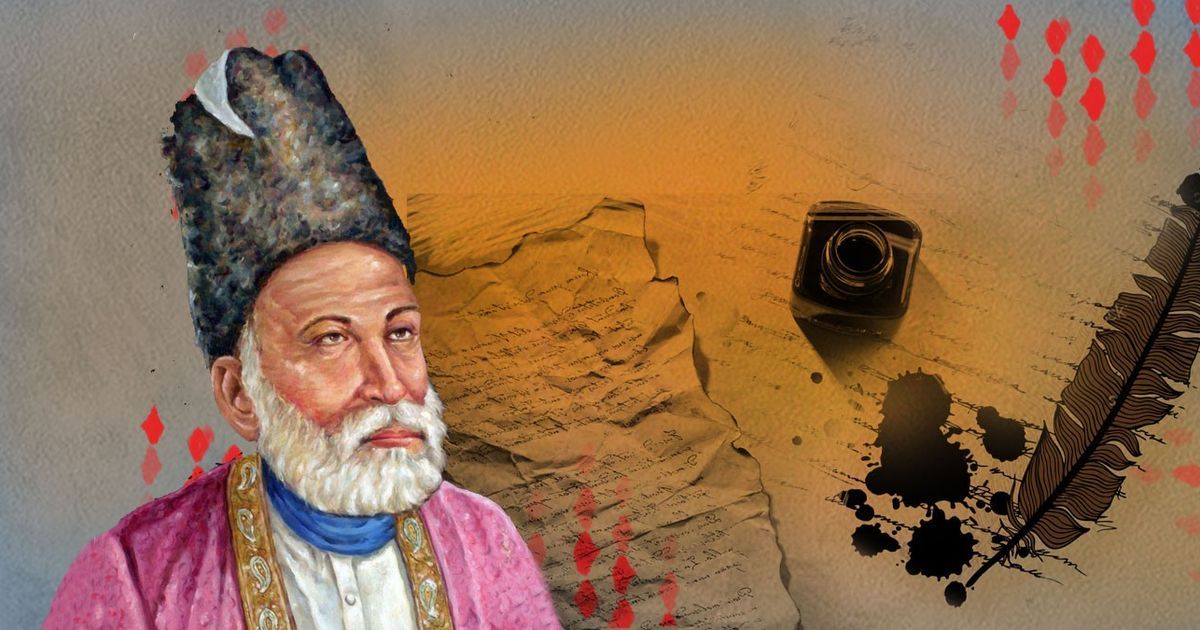aah ko chāhiye ik umr asar hote tak
kaun jiitā hai tirī zulf ke sar hote tak
dām-e-har-mauj meñ hai halqa-e-sad-kām-e-nahañg
dekheñ kyā guzre hai qatre pe guhar hote tak
āshiqī sabr-talab aur tamannā betāb
dil kā kyā rañg karūñ ḳhūn-e-jigar hote tak
tā-qayāmat shab-e-furqat meñ guzar jā.egī umr
saat din ham pe bhī bhārī haiñ sahar hote tak
ham ne maanā ki taġhāful na karoge lekin
ḳhaak ho jā.eñge ham tum ko ḳhabar hote tak
partav-e-ḳhur se hai shabnam ko fanā kī ta.alīm
maiñ bhī huuñ ek ināyat kī nazar hote tak
yak nazar besh nahīñ fursat-e-hastī ġhāfil
garmī-e-bazm hai ik raqs-e-sharar hote tak
ġham-e-hastī kā ‘asad’ kis se ho juz marg ilaaj
sham.a har rañg meñ jaltī hai sahar hote tak
Ghazal, a poetic form known for its lyrical beauty and emotional depth, has captivated poets and readers for centuries. Among the numerous luminaries who have contributed to the genre, Mirza Ghalib stands as a towering figure. Born in 1797, Ghalib’s poetry continues to resonate with audiences even today, transcending time and cultural boundaries. This essay explores the ghazals of Ghalib, delving into their unique features, themes, and the enduring legacy they have left behind.
Historical And Cultural Context:
Ghalib’s poetry emerged during the twilight of the Mughal Empire and the rise of British colonial rule in India. This period was marked by political turmoil, social change, and a clash of cultures. Ghalib himself witnessed the decline of the Mughal court, the struggle for independence, and the merging of Indian and Western influences. These historical and cultural factors greatly influenced Ghalib’s poetic sensibilities and the themes he explored in his ghazals.
Form And Structure Of Ghazals:
The ghazal is a poetic form characterized by a series of couplets, each standing independently, yet interconnected by a common rhyme and refrain. Ghalib mastered the intricate structure of the ghazal, often bending its rules to suit his artistic vision. His mastery lies in his ability to craft verses that flow seamlessly, effortlessly blending complex imagery, emotions, and philosophical musings within the constraints of the form.
Themes And Motifs:
Ghalib’s ghazals are known for their multifaceted exploration of human emotions, love, longing, and the enigmatic nature of existence. His verses beautifully capture the complexities of the human condition, the pain of separation, and the ephemeral nature of life. Ghalib’s poetry delves into the depths of human emotions, transcending mere romanticism to embrace a broader spectrum of experiences.
One of the recurring motifs in Ghalib’s ghazals is the portrayal of love as both a source of ecstasy and anguish. His verses portray love as a divine force that simultaneously elevates and torments the human soul. Ghalib’s ghazals also reflect upon life’s transitory nature and death’s inevitability. His contemplations on mortality and the ephemeral nature of existence evoke a sense of introspection and philosophical rumination.
Language And Imagery:
Ghalib’s command over the Urdu language is unparalleled. His verses are replete with rich metaphors, intricate wordplay, and profound philosophical insights. Ghalib’s ability to juxtapose contrasting images and ideas within a single verse is a testament to his linguistic prowess. His poetry often draws from the natural world, employing vivid imagery to depict emotions and experiences.
Legacy and Influence:
Ghalib’s ghazals have left an indelible mark on Urdu literature and poetry at large. His unique blend of romanticism, mysticism, and philosophical depth continues to inspire generations of poets and writers. Ghalib’s exploration of complex human emotions and his mastery of the ghazal form have made him an icon in the world of Urdu poetry. Scholars have celebrated and analysed his verses, and his impact extends beyond the realm of poetry, influencing music, literature, and popular culture.
Conclusion:
Mirza Ghalib’s ghazals stand as a testament to the timeless power of poetry to express the deepest recesses of the human soul. Through his mastery of the ghazal form, Ghalib seamlessly blended profound philosophical insights with exquisite lyrical beauty. His exploration of love, longing, mortality, and the complexities of existence continues to captivate readers and inspire poets. Ghalib’s ghazals transcend the confines.
